For short-term mild body pain, over-the-counter (OTC) medications such as paracetamol and ibuprofen are usually enough to induce relief. However, a patient may experience more intense, continual pain in circumstances that necessitate stronger treatment. These situations include chronic headaches and backaches, recovery from major surgical operations and injuries from sports, elevated falls, and other types of accidents. In these cases, doctors might prescribe stronger narcotic medications known as opioids to ease the pain.
While opioids are highly effective in attending to moderate and severe pain, there are known risks associated with these treatments, most notably the potential for drug addiction. With opioids being one of the most addictive drugs used worldwide, opioid use disorder (OUD) can lead to recurring harmful physical and emotional repercussions. In this article, we aim to answer the question, “what are opioids?” Furthermore, we also aim to shed light on possible treatment options for opioid users seeking assistance with their addiction.
What Makes a Drug an Opioid, and What Are Opioids Used For?
Opioids are chemical drugs that operate by binding to opioid receptors in the spinal cord, brain, gut, and other areas of the body. Natural opioids are a class of drugs extracted from the opium poppy plant, while synthetic opioids are artificial compounds made in a laboratory that emulate the mechanisms of their natural counterparts.
Our current understanding of how opioids work is that they regulate the transmission of pain signals and produce significant amounts of the reward neurotransmitter known as dopamine. These processes are responsible for the familiar pain-relieving effect known to opioids, but they also induce a relaxing “high” or a heightened sense of euphoria. We can observe that this addictive outcome, combined with the tendency for patients to develop tolerance, runs the risk of causing OUD.
List of Opioids
Opioids are one of the most accessible drugs used in the country. Over 16 million individuals are estimated to have suffered from opioid dependency at one point in their lives, and this statistic is exacerbated by the countless types of opioids available on the market. In this section, we present a common opioid list accompanied by descriptions of each form of the drug.
Heroin
Heroin is an opioid with a chemical composition similar to that of morphine. This compound is extracted from the seed pod of various opium poppy flowers in Southwest Asia and Latin America, and it can appear in the form of a white or brown powder or a viscous black tar. Injecting, sniffing, and smoking are the common methods of intaking heroin. Some users even mix the substance with other drugs such as cocaine.
Heroin is highly addictive, and it can enter the brain very quickly and slow down the heart rate and breathing. Short-term effects of the drug include dry mouth, nausea, vomiting, and impaired cognitive function. On the other hand, prolonged use may lead to insomnia and liver and kidney disease if a significant amount is consumed to the point of overdose.
Oxycodone
Synthesized via the compound thebaine from the opium poppy, oxycodone is a semi-synthetic narcotic commonly used for relieving moderate to severe pain. Much like other opioids, oxycodone acts on the central nervous system (CNS). This medication generally comes in the form of capsules, tablets, or a solution, and it is also available in combination with other analgesics like ibuprofen and aspirin.
While oxycodone is sold on the market under brand names like OxyContin® and Percodan®, the drug is only legally available through a prescription. Common street names for oxycodone are OC and kicker, and it is often abused via either an oral or intravenous route. It is very possible to overdose on oxycodone, with its known effects including extreme drowsiness, fainting, coma, and even death.
Fentanyl
Fentanyl is a synthetic opioid first introduced in the 1960s for its use as an intravenous anesthetic. The manufacture and distribution of fentanyl is legal under supervision of a medical professional, but its potency has led to rampant cases of drug addiction. Fentanyl is known to be 50 times stronger than heroin and 100 times stronger than morphine.
Pharmaceutical fentanyl prescribed by doctors often appears in oral lozenges, transdermal patches, and sprays. Meanwhile, illicitly produced versions of the drug are encountered either as tablets or as a powder. Fentanyl overdose can easily be detected by a trio of displayed symptoms: coma, abnormally small pupils, and hypoventilation. Furthermore, one can use fentanyl detection strips to test for the presence of the compound in drugs.
Hydrocodone
One of the most frequently prescribed opioids in the United States, hydrocodone is an orally active substance used as a pain reliever as well as a cough suppressant. It is chemically similar to codeine and morphine and produces similar physical effects. In medications, hydrocodone is usually present in combination with other compounds such as acetaminophen (Vicodin®, Lorcet®, and Lortab®) and antihistamines (Hycomine®).
Also known by its street names Hydro, Norco, and Vikes, hydrocodone is prone to oral abuse in the form of tablets, capsules, and syrups. Dizziness, anxiety, and depression are observed to be prolonged effects of hydrocodone. Unmanaged physical and mental dependence may lead to an overdose, which can cause severe liver damage, loss of consciousness, and death.
What Are the Most Abused Opioids?
Presently, opioids are the main cause of drug overdose deaths in the United States, with 68,630 overdose deaths in 2020 involving opioids according to the CDC, which is approximately 75% of the total overdose deaths for that year. Synthetic opioids make up the majority of opioid-related deaths (the cause of 82% of deaths), specifically illicitly-produced fentanyl. We can attribute this statistic to the high potency of fentanyl and the increasing number of drug submissions testing positive for fentanyl but not a higher rate of official fentanyl prescriptions.
Aside from fentanyl, heroin, hydrocodone (Vicodin®), and oxycodone (OxyContin®) top the commonly abused opioids list as semi-synthetic drugs known for rampant misuse. Drug deaths involving heroin in particular were seven times higher in 2020 compared to 1999. The combined sensation of euphoria and pain relief produced by these opioids plays a major contribution to these drug addiction numbers.
Opioid Addiction Treatment Options for Long-Term Users
Three million American citizens have had or currently suffer from OUD, and about 500 thousand have heroin dependency. For long-time users of opioids, we strongly suggest considering several addiction treatment options available to reduce the risk of future health conditions associated with prolonged misuse of the drugs.
- Medications: Alternative medications, such as methadone and buprenorphine, can assist an individual undergoing opioid withdrawal and prevent further symptoms. With medications like Suboxone available online. When taken in their proper dosage, these drugs still successfully affect receptors in the brain but not to a high extent like other addictive opioids. Furthermore, some drugs can lessen cravings without producing an intense “high” feeling or posing a risk of fatal overdose.
- Counseling and behavioral therapies: Aside from medications, long-term maintenance therapy that involves counseling and behavioral therapy can substantially increase the chance of breaking opioid addiction. We recommend these programs, as they usually incorporate family therapy, support groups, and motivational interviews to address the roots of the addiction as well as optimize channels for further treatment.
- Residential treatment: Lastly, residential treatment programs allow patients to live alongside people experiencing similar situations for further support during recovery. These programs provide intensive help specifically attuned to the needs of each individual, with some hospitals offering the option of inpatient rehabilitation for those with medical conditions. We believe these residential programs can be more effective once appropriately supplemented by other treatments mentioned above, such as medications and behavioral therapies.


